Click here👆to get an answer to your question ️ If √(1 x^2) √(1 y^2) = a(x y) then prove that dy/dx = √(1 y^2/1 x^2)Verify that x^2 cy^2 = 1 is an implicit solution to \frac {dy} {dx} = \frac {xy} {x^2 1} If you're assuming the solution is defined and differentiable for x=0, then one necessarily has y (0)=0 In this case, one can easily identify two trivial solutions, y=x and y=x If you're assuming the solution is defined andD √(x2 – y) y = C;

Solve The Differential Equation X 2 Y 2 Dx 2xydy 0 Youtube
√(1 x^2 y^2 x^2 y^2 ) xy dy/dx=0
√(1 x^2 y^2 x^2 y^2 ) xy dy/dx=0-Simple and best practice solution for (1x^2y^2x^2y^2)dy=y^2dx equation Check how easy it is, and learn it for the future Our solution is simple, and easy to understand, so don`t hesitate to use it as a solution of your homework If it's not what You are looking for type in the equation solver your own equation and let us solve itThen, m y = x ( y 2 x y 1 ) e xy ( 2 y x ) e xy = ( x y 2 x 2 y 2 x 2 y ) e xy and n x = y ( x 2 x y 1 ) e xy ( 2 x y ) e xy = ( x y 2 x 2 y 2 x 2 y ) e xy = m y The new equation is exact As was mentioned in class, there may be more than one integrating factor Here μ = (xy)1 will also work, although we have given no way to find this integrating factor, other




2xy 9x 2 X 2 2 Dy Dx 0 Y 0 3 Novocom Top
Find the general solution of differential equation x√(1 y^2) dx y√(1 x^2) dy = 0 ← Prev Question Next Question → 0 votes 464k views asked in Differential Equations by Siwani01 (504k points) closed by Siwani01 Find the general solution of differential equation x√(1 y 2) dx y√(1 x 2) dy = 0 differential equations;Share It On Facebook Twitter Email 1 Answer 1If x = 8 3 √7 and xy = 1, then (1 / x 2) (1 / y 2) is 1) 254 2) 192 3) 292 4) 66 5) 62 Solution (1) 254 x = 8 3 √7 and xy = 1 y = 1 / x = 1 / 8 3 √7 = 8 – 3 √7 / 1 and x = 1 / y (1 / x 2) (1 / y 2) = y 2 x 2 = (8 – 3 √7) 2 (6 3 √7) 2 = 2 (8 2 9 * 7) = 2 64 63 = 254 Was this answer helpful?
Click here👆to get an answer to your question ️ Solve (3xy y^2)dx (x^2 xy) dy = 0 , y(1) = 1Equation at the end of step 1 y ((2•(x 2))•((d•—)•x))(3xyy 2) = 0 d Step 2 Equation at the end of step 2 (2x 2 • xy) (3xy y 2) = 0 Step 3 Step 4 Pulling out like terms 41 Pull out like factors 2x 3 y 3xy y 2 = y • (2x 3 3x y) Trying to factor a multi variable polynomial 42 Factoring 2x 3 3x y Try to factor this multivariable trinomial using` (x^(2)y^(2)) dx 2xy dy = 0`
X 4 y 4x 2 y 2 x 2 y is not a perfect cube Equation at the end of step 8 d • (x 4 y 4x 2 y 2 x 2 y) = 0 Step 9 Theory Roots of a product 91 A product of several terms equals zero When a product of two or more terms equals zero, then at least one of the terms must be zero We shall now solve each term = 0 separately In other words, we are going to solve as many Set u = x y Hence d u d x = x d y d x y Hence your equation became x u d u d x − 1 = 1 2 u u − 1 u − 1 3 u 2 d u = 1 x d x Now you can integrate both sides You can then integrate both sides To write this as a fuction of y requires the Lambert WTo ask Unlimited Maths doubts download Doubtnut from https//googl/9WZjCW `x(1y^2)dxy(1x^2) dy=0`




X 2 Y 2 Dx 2xy Dy 0 Youtube




Solve Sqrt 1 X 2 Y 2 Xy Xydy Dx 0 Youtube
325 K views 16 K people like this Like Share Share Answer Text SolutionSolve your math problems using our free math solver with stepbystep solutions Our math solver supports basic math, prealgebra, algebra, trigonometry, calculus and moreTo ask Unlimited Maths doubts download Doubtnut from https//googl/9WZjCW `(1x^2) dy/dxxy=1`




2xy 9x 2 X 2 2 Dy Dx 0 Y 0 3 Novocom Top



1
Compute answers using Wolfram's breakthrough technology & knowledgebase, relied on by millions of students & professionals For math, science, nutrition, history, geography, engineering, mathematics, linguistics, sports, finance, music WolframAlpha brings expertlevel knowledge and capabilities to the broadest possibleC √(x y) y = C;Problem Answer The solution is √(x2 y2 ) y = C View Solution Latest Problem Solving in Differential




Dy Dx X Y 1 X Y 3 Novocom Top




Solve 1 X 2 D 2y Dx 2 X Dy Dx Y X 1 X 2 3 2 Mathematics 2 Question Answer Collection
Wolfram Alpha gives which looks a lot more likely to me to be correct than the other answer provided so far (which includes a pretty elementary error in the1 Answer1 Active Oldest Votes 1 The solution (below) is obtained on the form of an implicit equation Then, it is not very difficult to explicit x ( y) But it seems not possible to get a closed form for the inverse function y ( x) with the available standard functions Share answered Dec 16 '16 at 846 JJacquelinFactor out the Greatest Common Factor (GCF), 'd' d(2xy 2 x 2 x 2 y 2 1y 2) = 0 Subproblem 1 Set the factor 'd' equal to zero and attempt to solve Simplifying d = 0 Solving d = 0 Move all terms containing d to the left, all other terms to the right Simplifying d = 0 Subproblem 2 Set the factor '(2xy 2 x 2 x 2 y 2 1y 2)' equal to zero and attempt to solve Simplifying 2xy 2




Solve The Differential Equation X 2 Y 2 Dx 2xydy 0 Youtube




Solving Separable Differential Equations Calculus Socratic
B √(x2 y2 y) = C;Answer to Solve the homogeneous equations x^2 dy ( y^2 xy) dx =0 By signing up, you'll get thousands of stepbystep solutions to your By the way, the original equation 1x^2 dy/dx = 1y^2 is equivalent to x^2 dy/dx = y^2 with the solution ehild Unfortunately people on this board tend to be so sloppy with parentheses I just automatically assumed that was intended, but yes, the correct interpretation of what was written is as you say Share
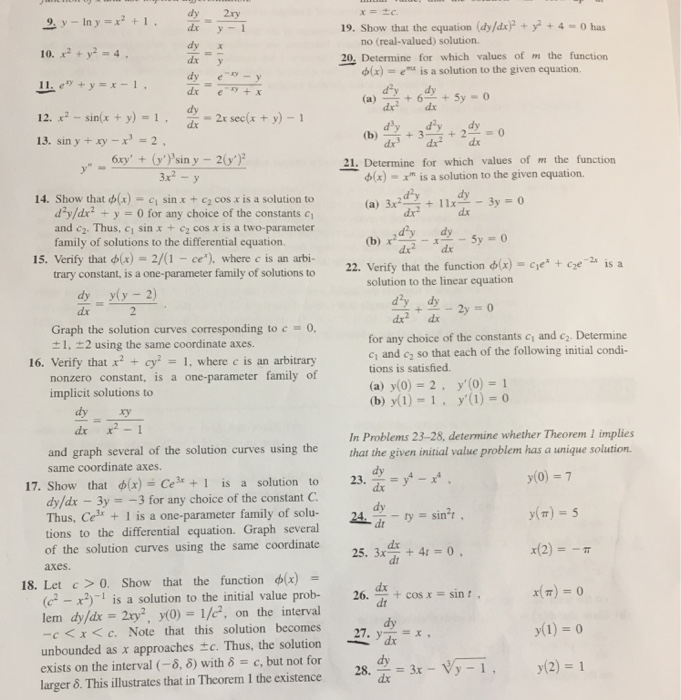



Y Ln Y X 2 1 Dy Dx 2xy Y 1 X 2 Y 2 4 Chegg Com
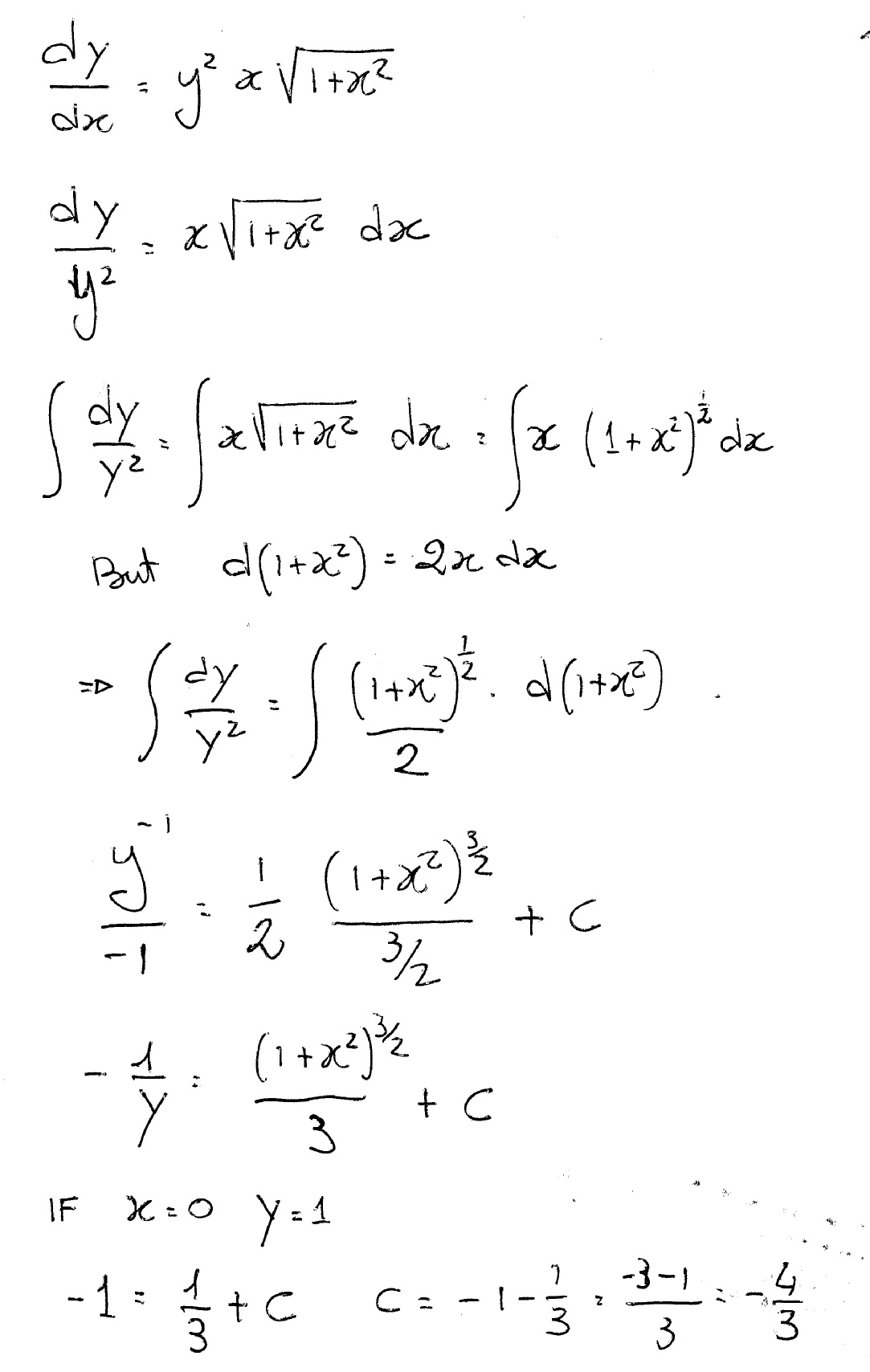



How Do You Solve Dy Dx Y 2xsqrt 1 X 2 Where Y 1 When X 0 Socratic
Welcome to Sarthaks eConnect A unique platform where students can interact with teachers/experts/students to get solutions to their queries Students (upto class 102) preparing But if I expand the bracket $(xy)^2$ before integrating I will get $$\varnothing_1=\int Mdx=\int (xy)^2dx=\int (x^22xyy^2)dx=\frac{x^3}{3}xy^2x^2y$$ Wich will lead to the solution $$\varnothing=\varnothing_1\varnothing_2=\frac{x^3}{3}xy^2x^2yy=Constant$$ What is the wrong step ? (x^22xyy^2)dx(x y)^2 dy= Find the particular solution of the differential equation (3xy y^2)dx (x^2 xy)dy = 0, for x = 1, y = 1 asked Nov 17, 18 in Mathematics by monuk ( x^2y2y^23x64=0 Given DE (2xy3)dx(x^24y)dy=0 Comparing above equation with the standard form of DE MdxNdy=0 we get M=2xy3\implies \frac{\partial M}{\partial y}=2x & N=x^24y\implies




Double Integrals Volume And Average Value



How To Solve The Homogeneous Differential Equation Xydy Dx Y 2 X 3 X 2 1 Quora
Factor out the Greatest Common Factor (GCF), 'd' d(xX 2x 2 y 2 y 2) = 0 Subproblem 1 Set the factor 'd' equal to zero and attempt to solve Simplifying d = 0 Solving d = 0 Move all terms containing d to the left, all other terms to the right Simplifying d = 0 Subproblem 2 Set the factor '(xX 2x 2 y 2 y 2)' equal to zero and attempt to solve Simplifying xX 2x 2 y 2 y 2 = 00 (0) Upvote (0) Choose An Option That BestAnswer to Solve 2xy dx (x^2 1) dy = 0 By signing up, you'll get thousands of stepbystep solutions to your homework questions You can also
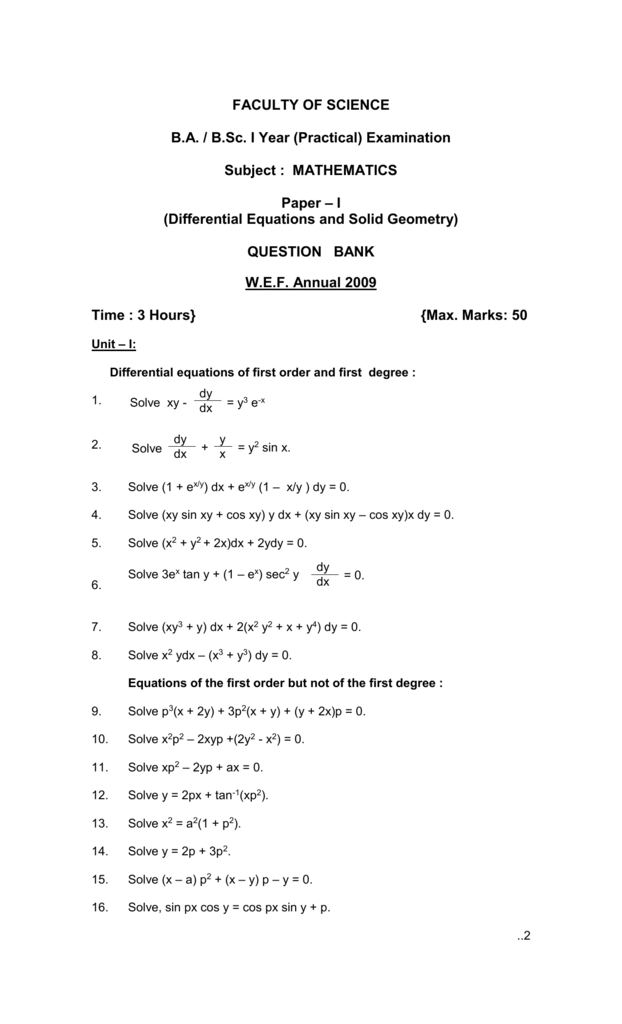



Paper



Solve The Following Differential Equation 1 X 2 Y 2 X 2y 2 Xy Dy Dx 0 Sarthaks Econnect Largest Online Education Community
Learn how to solve differential equations problems step by step online Solve the differential equation xy*dx(1x^2)dy=0 Grouping the terms of the differential equation Group the terms of the differential equation Move the terms of the y variable to the left side, and the terms of the x variable to the right side Simplify the expression \frac{1}{y}dy Integrate both sides of the 1 Multiple by xayb so Mdx Ndy = 0 with M = xayb 1 xa 1yb 2, N = xa 1yb xa 2yb 1 xa 3yb 2 We choose a, b to achieve 0 = ∂yM − ∂xN = (b 1)xayb (b 2)xa 1yb 1 − (a 1)xayb − (a 2)xa 1yb 1 − (a 3)xa 2yb 2 = xayb((b − a)(1 xy) − (a 3)(xy)2) a = b = − 3 So 0 = Mdx Ndy = (x −Take term (which starts) with y on RHS x(√(1y^2)) = (y(√(1x^2)))dy/dx Now take x terms on one side and y terms on another side, so what you will get is x/(√(1x^2))dx = (y/√(1y^2))dy Now Integrate both sides, Here if you see that numera




Evaluate The Double Integral Xysqrt X 2 Y 2 Dydx Without Using Trigonometric Substitutions Youtube
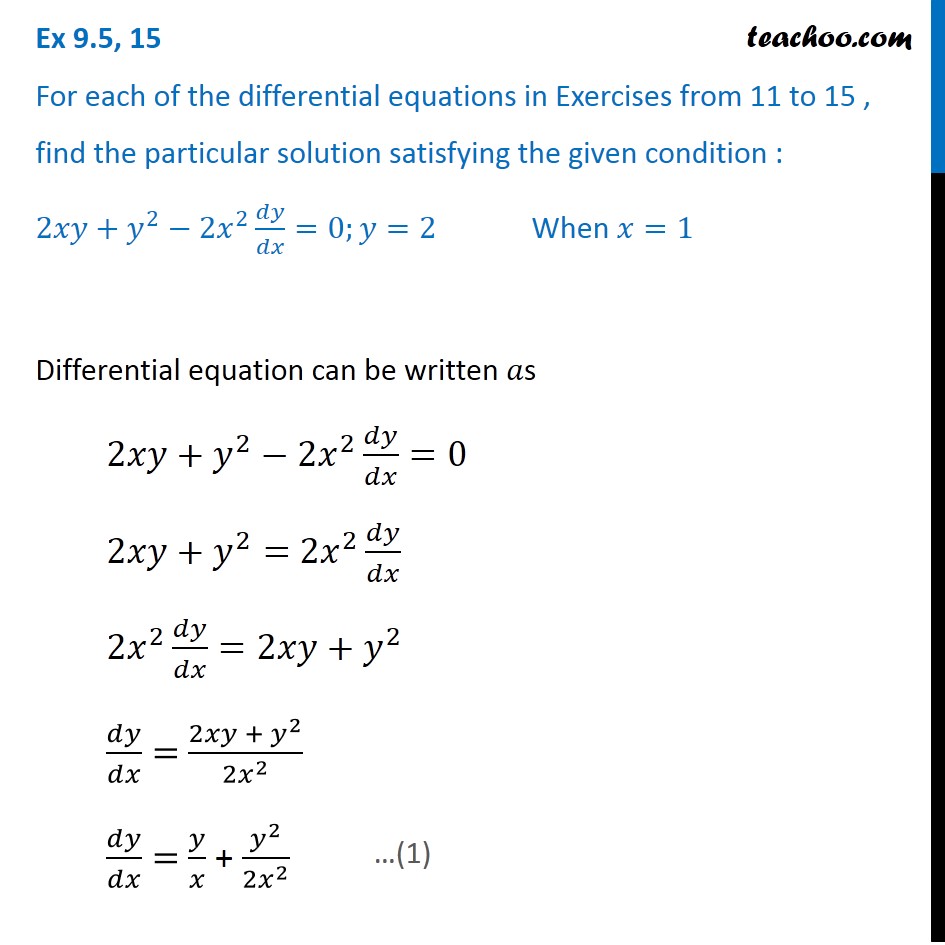



Ex 9 5 15 Class 12 Find Solution 2xy Y 2 2x 2 Dy Dx 0 When
Show that y^(2)dx (xy x^(2))dy = 0 is a homogeneous differential equation Also find its general solution Apne doubts clear karein ab Whatsapp par bhi Try it now CLICK HERE 1x 15x 2x Loading DoubtNut Solution for you Watch 1000 concepts & tricky questions explained! Solve the following differential equation √(1 x^2 y^2 x^2y^2) xy(dy/dx) = 0 asked in Mathematics by Samantha (3k points) differential equations;Factor out the Greatest Common Factor (GCF), 'dy' dy(2x xy x 2 2y) = 0 Subproblem 1 Set the factor 'dy' equal to zero and attempt to solve Simplifying dy = 0 Solving dy = 0 Move all terms containing d to the left, all other terms to the right Simplifying dy = 0 The solution to this equation could not be determined This subproblem is being ignored because a solution could not be




Sqrt 1 X 2 Dy Sqrt 1 Y 2 Dx 0



Canvas Harvard Edu Courses 376 Files 9169 Download Verifier M1wmosj4bwi4u4hkdddc4nngghmnpqbpqy0kz8wt
1/√(1 – x 2) – 1/√(1 – y 2) dy/dx = 0 1/√(1 – x 2) = 1/√(1 – y 2) dy/dx dy/dx = √(1 – y 2)/√(1 – x 2) Hence option (2) is the answer Was this answer helpful? What is the general solution of the differential equation # (x^2y^2)dx(x^2xy)dy = 0 #?Simple and best practice solution for (x^2y^2)dy(y^2xy)dx=0 equation Check how easy it is, and learn it for the future Our solution is simple, and easy to understand, so don`t hesitate to use it as a solution of your homework If it's not what You are looking for type in the equation solver your own equation and let us solve it Equation SOLVE Solution for (x^2y^2)dy(y^2xy)dx=0




X 1 X 2 Dy 2x 2y Y Ax 3 Dx 0




How To Solve This Differential Equation Dy Dx X 2y 2x Y 0 Thanks In Advance Brainly In
Solve 1/(x y(x) 1)^2 ( dy(x))/( dx) (x^2/(x y(x) 1)^2 y(x)^2) = 0 Let P(x, y) = 1/(x y 1)^2 and Q(x, y) = y^2 x^2/(x y 1)^2 This is an exact Niwet re Equation différentielle xy'2y=x/(1x^^2) à 0143 Bonsoir, C'est une résolution generale ( toutes les solutions), je suppose Je ne sais pas si ce que je dis est bon mais je pense que ça peut etre dans ce genre Ce que j'aurai fait c'est poser dans un premier temps a(x) =2/x b(x) = 1/(1x^2) Prendre un Xo quelconque dans tq Xo 0 Puis construire un intervalHelp is appreciated Edit I solved both at y(1)=1 and



1



Www Ualberta Ca Csproat Homework Math 334 Assignment solutions Assignment 2 solutions Pdf
Share It On Facebook Twitter Email 1 Answer 1 vote answeredFind dy/dx y^2=1/(1x^2) Differentiate both sides of the equation Differentiate the left side of the equation Tap for more steps Differentiate using the chain rule, which states that is where and Tap for more steps To apply the Chain Rule, set as Differentiate using the Power Rule which states that is where Replace all occurrences of with Rewrite as Differentiate the right JP re xy
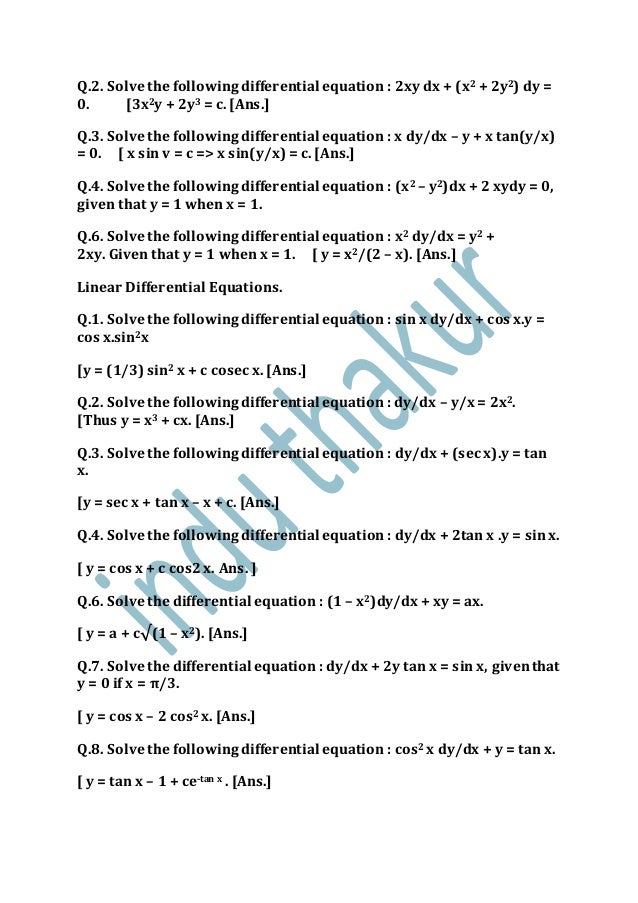



Practice Questions Calculus Xii
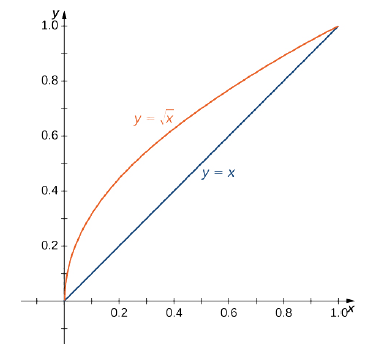



15 2 Double Integrals Over General Regions Mathematics Libretexts
Solve the differential equation √(1 x^2 y^2 x^2y^2) xy(dy/dx) = 0 ← Prev Question Next Question → 0 votes 817 views asked Mar 13 in Differential Equations by Yaad (352k points) closed Mar 13 by Yaad Solve the differential equation \(\sqrt{1x^2y^2x^2y^2}xy\frac{dy}{dx}=0\) differential equations;Click here👆to get an answer to your question ️ Solve the following differential equation √(1 x^2 y^2 x^2y^2) xy dy/dx = 0Click here👆to get an answer to your question ️ Solve the differential equation, (x^2 xy)dy = (x^2 y^2) dx



If Math Sqrt 1 X 2 Sqrt 1 Y 2 A X Y Math How Can I Prove Math Frac Mathrm D Y Mathrm D X Sqrt Frac 1 Y 2 1 X 2 Math Quora



Faculty Math Illinois Edu Lhicko2 Math234 Worksol2 16 Pdf
Solve the differential equation √(1 x^2 y^2 x^2y^2) xy(dy/dx) = 0 ← Prev Question Next Question → 0 votes 8 views asked in Mathematics by Navin01 (507k points) closed by Navin01 Solve the differential equation √(1 x 2 y 2 x 2 y 2) xy(dy/dx) = 0 cbse;Click here👆to get an answer to your question ️ Solve the differential equation x(1 y^2)dx y(1 x^2)dy = 0Solve your math problems using our free math solver with stepbystep solutions Our math solver supports basic math, prealgebra, algebra, trigonometry, calculus and more



Http Pages Mtu Edu Struther Courses Old Other Older 3521 10 Quizstuff Fromgil Ch 2 Pdf



Users Math Msu Edu Users Bellro Lb2sp12homework S8 Pdf
The issue is that you integrated y with respect to x, and concluded that it was equal to y This is only viable if y = aex for some constant a, which we have no reason to suspect Solve y ^2x (\frac {dy} {dx})^2 = 1 using proposed change of variables Solve y2 −x(dxdy )2 = 1 Solution Solve (y√(x^2y^2))dxxdy=0 Prev Article Next Article (Last Updated On ) Problem Statement EE Board April 1995 Solve (y√(x^2y^2))dxxdy=0 A √(x2 y2 ) y = C;Calculus Applications of Definite Integrals Solving Separable Differential Equations



Http Pages Mtu Edu Ipinelis Teaching Ma3160 Review3 Key Pdf




X Y 1 Dx Y X 1 Dy 0find The General Solution Of The Differential Equation Brainly In
0 (0) Upvote (0) Choose An Option That Best Describes Your Problem Answer not in Detail Incomplete Answer Answer Incorrect Others Answer not in Detail Incomplete Answer Answer Incorrect Others ThankTo ask Unlimited Maths doubts download Doubtnut from https//googl/9WZjCW `(3x yy^2)dx(x^2x y)dy=0`All equations of the form a x 2 b x c = 0 can be solved using the quadratic formula 2 a − b ± b 2 − 4 a c The quadratic formula gives two solutions, one when ± is addition and one when it is subtraction x^ {2}yxy^ {2}=4 x 2 y x y 2 = 4 Subtract 4 from both sides of the equation



Solve The Differential Equation X2 1 Dy Dx 2xy 1 X2 1 Studyrankersonline



Http Wwwf Imperial Ac Uk Jdg Ee22soln Pdf




Solve Y 2 2x 2y Dx 2x 3 Xy Dy 0 Mathematics Stack Exchange
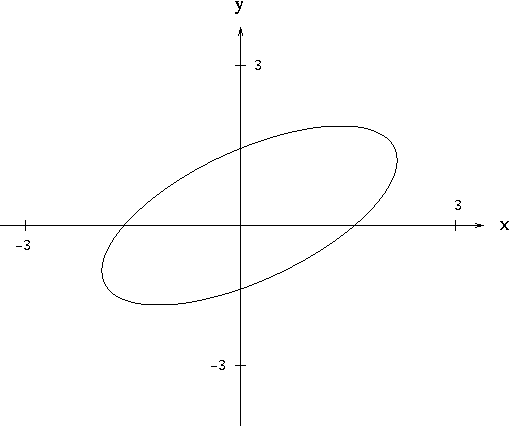



Implicit Differentiation




Solve Differential Equation Sqrt 1 X2 Y2 X2y2 Xy Dy Dx 0 Maths Differential Equations Meritnation Com



Www Tau Ac Il Levant Ode Solution 6 Pdf



Www Whitman Edu Mathematics Multivariable Multivariable 15 Multiple Integration Pdf



Exact Equations




D Y X2 1 X2 Y2 X2 Y2 D X Y2 D Y 2 X 2 Y2 X Gauthmath



Www Open Edu Openlearn Ocw Mod Resource View Php Id




Gaussian Integral Wikipedia



1



16 1 2 Variables Separable Equations



Find The General Solution Of Y2dx X2 Xy Y2 Dy 0 Studyrankersonline




Homogeneous Differential Equations




For The Differential Equation X 2 Y 2 Dx 2xy Dy 0 Which Of The
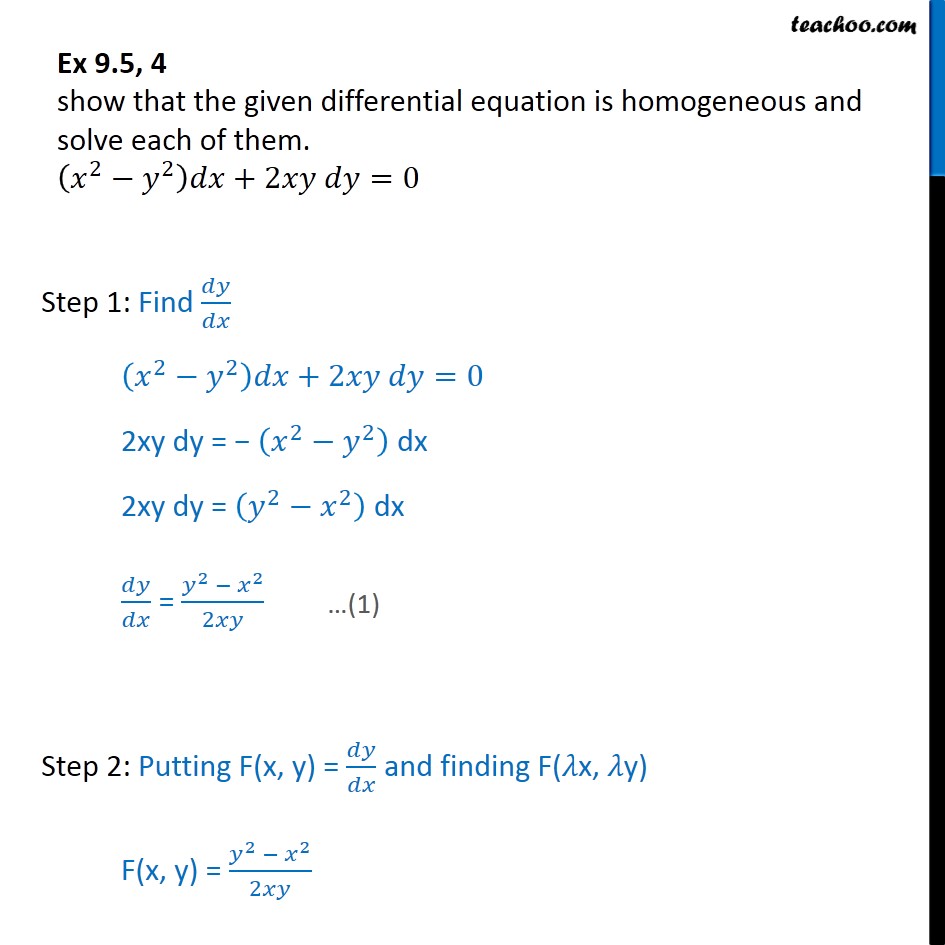



Ex 9 5 4 Show Homogeneous X2 Y2 Dx 2xy Dy 0 Ex 9 5



Www Jstor Org Stable
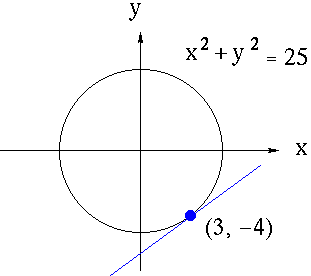



Implicit Differentiation
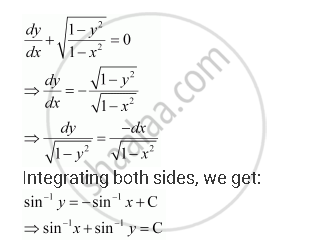



Find The General Solution Of The Differential Equation Dy Dx Sqrt 1 Y 2 1 X 2 0 Mathematics Shaalaa Com
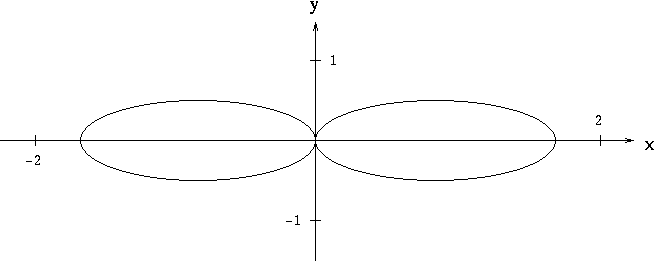



Implicit Differentiation
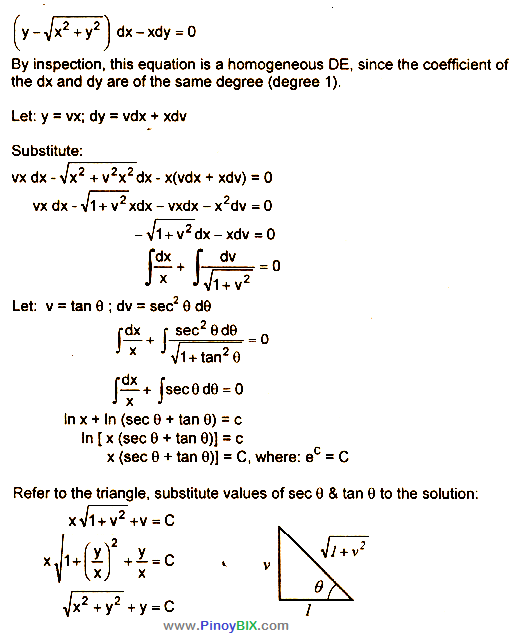



Solution Solve Y X 2 Y 2 Dx Xdy 0




Differential Equation Dy Dx 1 Sqrt 4 X 2 And Y 0 Pi Differential Equations Math Videos Equation
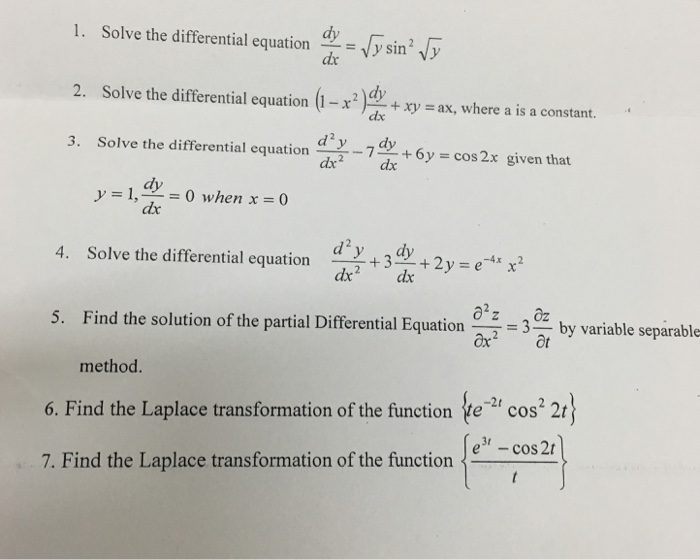



Solve The Differential Equation Dy Dx Squareroot Y Chegg Com




Worked Example Identifying Separable Equations Video Khan Academy



Www Ualberta Ca Csproat Homework Math 334 Assignment solutions Assignment 1 solutions Pdf



Canvas Harvard Edu Files Download Download Frd 1 Verifier Uicc4gewmilbskycdu7jq6cnx2jjsjmmqz2jgarh




Solve Y 1 Xy Dx X 1 Xy X 2y 2 Dy 0 Mathematics Stack Exchange
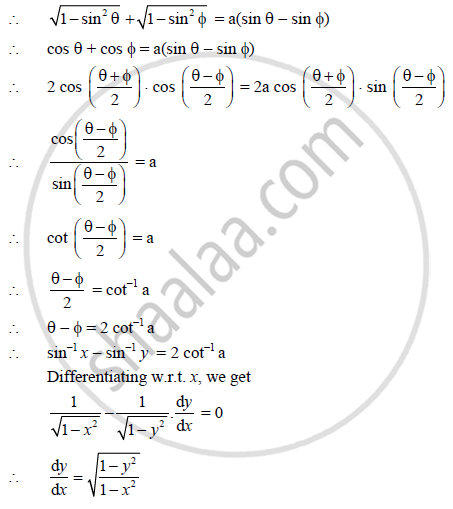



If Sqrt 1 X 2 Sqrt 1 Y 2 A X Y Show That Dy Dx Sqrt 1 Y 2 1 X 2 Mathematics And Statistics Shaalaa Com



Jntua Ac In Gate Online Classes Registration Downloads Material A Pdf




Double Integrals Volume And Average Value




1 X2 Y2 X2y2 1 2 Xy Dy Dx 0 How To Solve Dis Diffrential Equation Please Ans Asap Maths Differential Equations Meritnation Com




Solve The Differential Equation 1 X 2 Y 2 X 2y 2 Xy Dydx 0




How To Solve This Differential Equation 2xydy X 2 Y 2 1 Dx 0 Quora



Solve The Following Differential Equation 1 X 2 Y 2 X 2y 2 Xydy Dx 0 Sarthaks Econnect Largest Online Education Community




For The Differential Equation X 2 Y 2 Dx 2xy Dy 0 Which Of The Following Are True Youtube




1 X2 Y2 X2y2 1 2 Xy Dy Dx 0 How To Solve Dis Diffrential Equation Please Ans Asap Maths Differential Equations Meritnation Com



Solve 2 Y 3 Xy Dy Dx 0 Given That Y 1 2 Studyrankersonline




Worked Example Implicit Differentiation Video Khan Academy




Implicit Differentiation




Solve Y 2 2x 2y Dx 2x 3 Xy Dy 0 Mathematics Stack Exchange



Http Www Math Sci Hokudai Ac Jp S Settepanella Teachingfile Calculus Calculus2 Pagine Lineintex Pdf




Chapter 04 2500 Solved Problems In Differential Equations Docsity



What Is The Solution For Math Sqrt 1 X 2 Sqrt 1 Y 2 Dx Xy Dy 0 Math Quora



1



Double Integrals Over General Regions Page 2




How To Do Implicit Differentiation 7 Steps With Pictures
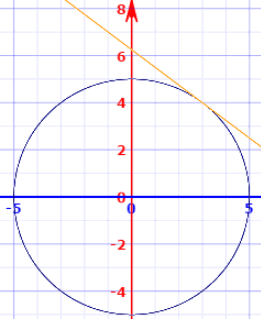



Implicit Differentiation
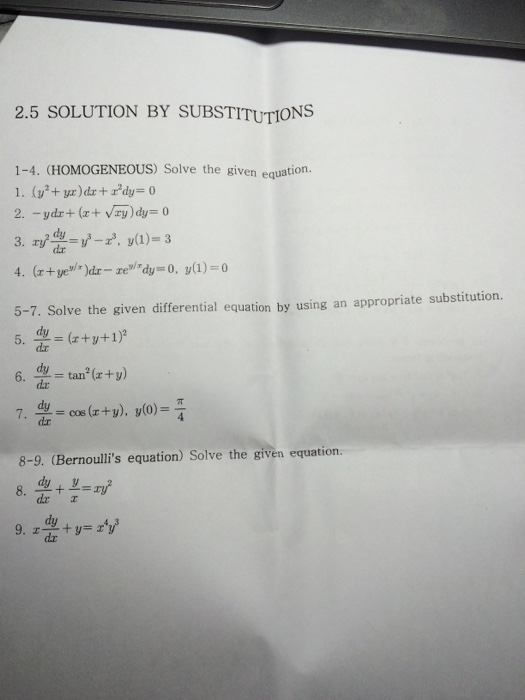



Solve The Given Equation Y 2 Yx Dx X 2 Dy 0 Chegg Com
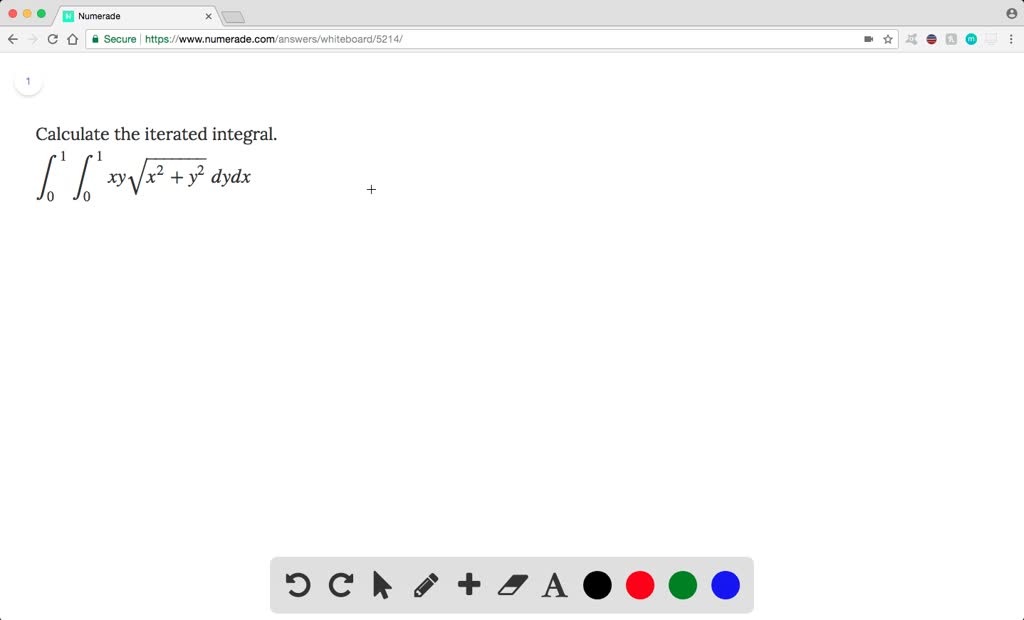



Solved Calculate The Iterated Integral Displays



Gfgc Kar Nic In Mangalore Genericdochandler 197 db 07ac 4f65 B5c9 2fcf8d7a5f Pdf




Dy Dx X Y 1 X Y 3 Novocom Top




If X2 Y2 2 Xy Find Dy Dx Mention Each And Every Step Mathematics Topperlearning Com Gwvwfskk




How To Do Implicit Differentiation 7 Steps With Pictures



What Is The Solution For Math Sqrt 1 X 2 Sqrt 1 Y 2 Dx Xy Dy 0 Math Quora




The Solution Of The Differential Equation 1 Y X 2y Dx X




Implicit Differentiation Advanced Example Video Khan Academy
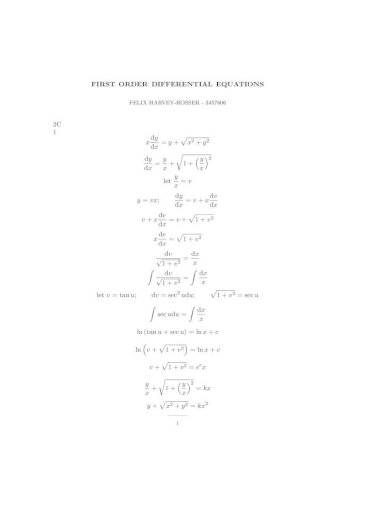



First Order Differential First Order Differential Equations 3 3 X2 Y2 Dx 2xy Dy 0 Dy Dx Y2 X2 2xy Pdf Document




What Is The Solution For Math Sqrt 1 X 2 Sqrt 1 Y 2 Dx Xy Dy 0 Math Quora



Secure Media Collegeboard Org Digitalservices Pdf Ap Ap16 Calculus Ab Q4 Pdf



Double Integrals Over General Regions Calculus Volume 3



Solve The Differential Equation Xy 2 X Dx X 2y Y Dy 0 Sarthaks Econnect Largest Online Education Community




If Y X X2 1 1 2 M Then Show That X2 1 D2y Dx2 X Dy Dx M2y 0 Mathematics Topperlearning Com 6jd9kell



Solve The Following Differential Equation X 2 Y 2 Dx 2xy Dy 0 Given That Y 1 When X 1 Sarthaks Econnect Largest Online Education Community




Solve Y 2 2x 2y Dx 2x 3 Xy Dy 0 Mathematics Stack Exchange



Solve The Following Differential Equation 1 X 2 Y 2 X 2y 2 Xydy Dx 0 Sarthaks Econnect Largest Online Education Community



Http Www Math Montana Edu Courses M273 Reviewe3s17solutions Pdf




Solve 1 X 2 D 2y Dx 2 X Dy Dx Y X 1 X 2 3 2 Mathematics 2 Question Answer Collection
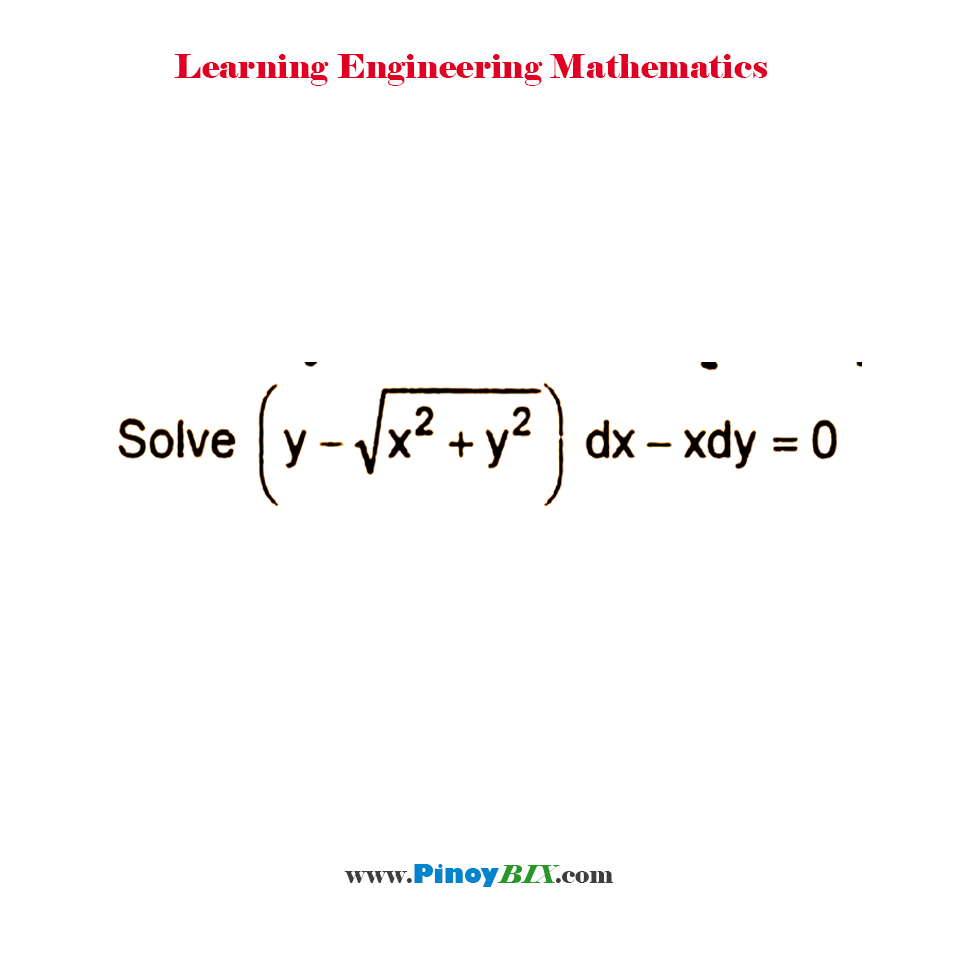



Solution Solve Y X 2 Y 2 Dx Xdy 0




Misc 7 Show That General Solution Is X Y 1 A 1 X Y 2xy




Ex 9 5 12 Find Particular Solution X2 Dy Xy Y2 Dx 0
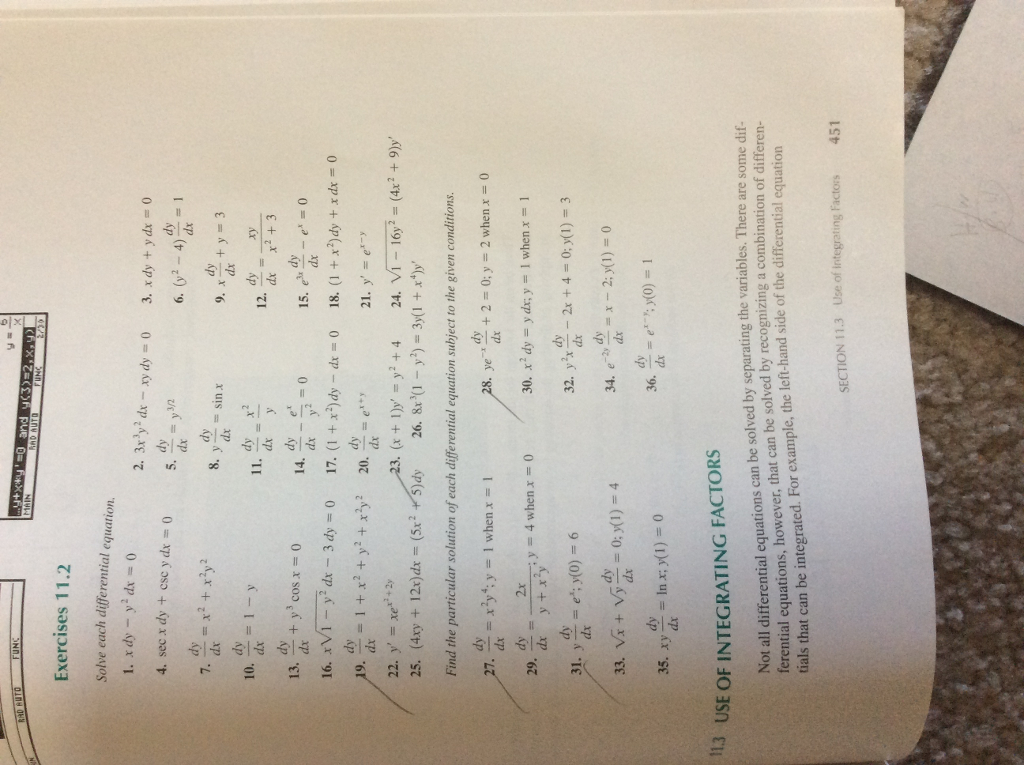



Solve Each Differential Equation X Dy Y 2 Dx 0 Chegg Com



Http Www Disconzi Net Teaching Mat2300 Fall 16 Extras Practice Test 2 Solutions Pdf




3x Y Y 2 Dx X 2 X Y Dy 0 Youtube



0 件のコメント:
コメントを投稿